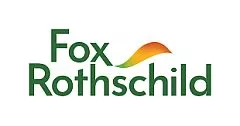- within Immigration and Corporate/Commercial Law topic(s)
- with Finance and Tax Executives
- in European Union
- with readers working within the Automotive, Basic Industries and Healthcare industries
In geographic locations outside of Pennsylvania, stormwater facilities are frequently operated and maintained by local government and funded through user fees placed on residents of the watershed. For example, in Montgomery and Prince George Counties, Maryland, property owners currently pay a stormwater utility fee. And the state legislature in Maryland has recently enacted a "stormwater remediation fee" that creates a new fee within a nine-county region and is designed to pay for stormwater management as well as stream and wetland restoration.
In April 2013, the Pennsylvania Senate approved legislation that would amend Title 53 (Municipalities Generally) to expressly allow for the creation of municipal stormwater authorities. Senate Bill 351, authored by Sen. Ted Erickson (R-Chester/Delaware), would add "stormwater management planning and projects" to the list of activities for which municipalities are expressly enabled to establish authorities. By doing so, the legislation would remove any ambiguity as to whether storm water authorities are permissible under Pennsylvania law.
SB 351 does not offer any form or describe any specific requirements for stormwater authorities. However, the likely structure would entail a utility user fee (as distinguished from a tax) for property owners within a watershed and based upon some formula that attempts to incorporate impervious surfaces.
In search of a dedicated funding source for stormwater activities, some municipalities in Pennsylvania have already undertaken to create stormwater fees. By way of example, the City of Philadelphia has created a stormwater utility fee. It is calculated based upon the individual characteristics of the property; namely it calculates the charge from the gross area of a property as well as the impervious area of the property.
In 2011, Mt. Lebanon, Pennsylvania, also approved the creation a stormwater utility fee for all developed properties. The new fee followed a common billing methodology. That is to say, it determined that a typical single-family home in the municipality contained 2,400 square feet of impervious surfaces, including roofs, sidewalks, patios, etc. Based upon this information, it established an "equivalent residential unit" (ERU) as 2,400 square feet of impervious surface. Individual residential units such as single-family homes, townhomes, duplexes each pay a flat $8 per month. Commercial/industrial properties pay $8 per 2,400 square feet of impervious (i.e., per ERU).
Mt. Lebanon has met with some resistance to its stormwater fee in the form of lawsuits from an owner of an apartment complex over fee calculation as well as from religion institutions claiming they should be exempt from what they view as a tax. However, since the municipality's stormwater fee is applied as a utility fee versus a property tax, it applies to all property owners regardless of tax-exempt status.
A common facet of most, if not all, stormwater fees is a process for property owners who take specific approved actions to reduce demand on municipal stormwater services the opportunity to receive credits against the fee. Philadelphia provides for a 100 percent credit while Mt. Lebanon offers the potential for a 50 percent credit for the use of rain barrels, peak-flow attenuation and/or to educational institutions.
If stormwater utilities have a long history outside of Pennsylvania and there have been some municipalities within the Commonwealth currently levying stormwater fees, some observers ask why SB 351 is needed. According to its sponsor, the answer is that there have been several municipalities in Pennsylvania who have considered creating stormwater authorities, but have been reluctant act to without express authority by the General Assembly.
Additionally, the urgency for additional municipal revenue mechanisms for stormwater costs is building. Constraints on municipal General Funds may dissuade local governments from continuing to rely on existing tax revenues. And, as urban municipalities in Pennsylvania begin the process of implementing their respective MS4 NPDES Phase II permit responsibilities, the new regulatory requirements are anticipated to quickly escalate municipal costs, particularly in impaired watersheds with strict new limits on pollution contribution. Some estimates place the cost to a municipality in an impaired watershed ranging upwards of $700,000 over five years.
On the developer/landowner side, the biggest issue with the legislation is that the new local government authorities created to manage stormwater will essentially be groups of unelected officials given considerable power, most notably, the power to impose user or impact fees and determine how those fees are assessed. Since fees are not collected in most jurisdictions in Pennsylvania, these would be new fees flowing from developers/landowners to local government, and such fees would become another factor in determining the viability of any particular project.
SB 351 has been approved by the Pennsylvania Senate and is currently in the House Local Government Committee.
Originally published in In the Zone.
The content of this article is intended to provide a general guide to the subject matter. Specialist advice should be sought about your specific circumstances.


